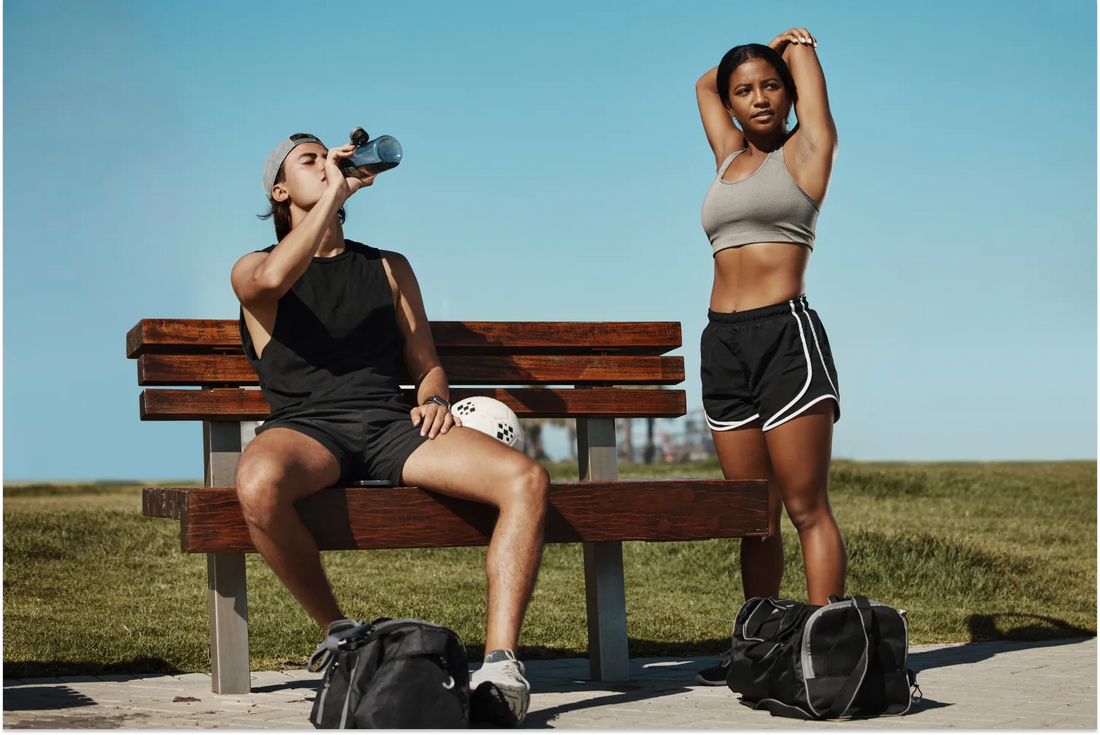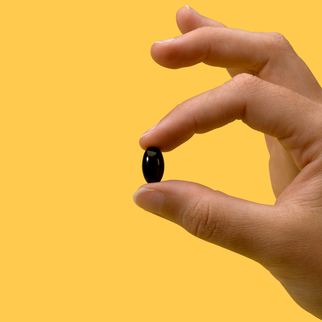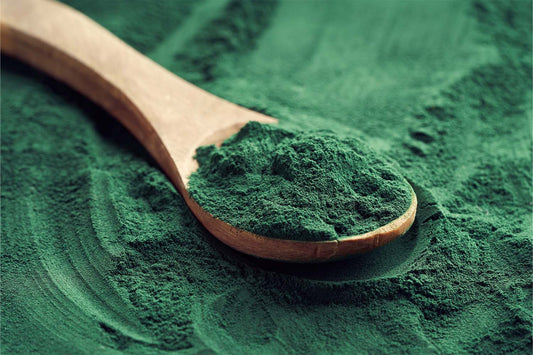Here at iwi life, we understand that achieving optimal health goes beyond just the nutrients you consume. It also involves regular physical activity, balanced with adequate rest and recovery.
Rest days are an essential part of any fitness routine, but that doesn't mean you have to stay idle. Enter the concept of active recovery — a means to enhance recovery, maintain momentum, and even enjoy some low-key exercise.
What Is Active Recovery?
At its core, active recovery refers to engaging in low-intensity physical activity on your rest days. The aim is not to challenge your body to the extent of a typical workout, but to promote blood flow, reduce muscle soreness, and aid overall recovery.
After a tough workout, many of us are familiar with the sensation of sore muscles. That's where the concept of active recovery workouts comes into play. Rather than lounging on the couch all day, active recovery encourages you to perform light physical activities that get your heart rate up without causing fatigue or strain.
When you engage in intense workouts, your muscles build up lactic acid — a waste product of exertion. By encouraging blood flow to your muscle groups through low-intensity exercises, active recovery aids in the removal of lactate and other waste products, reducing soreness and muscle damage.
Light, active movements can help enhance the removal of these natural by-products, reducing muscle stiffness and discomfort. When you perform a low-intensity active recovery workout, you're allowing your muscles to gently stretch and contract. This movement increases blood flow and can enhance your range of motion, both of which can ease muscle tightness and discomfort.
Furthermore, active recovery days can benefit your mental wellness too. Exercise, even at a lower intensity, can boost mood and alleviate stress. It's a chance to try new activities, shift focus from strenuous workout goals, and enjoy movement without pressure.
How Does Active Recovery Compare to Passive Recovery?
Passive recovery is the opposite of active recovery as it refers to complete rest — no exercise, just rest and relaxation. It's a day to allow your body to recover from the intense workouts it's been put through, offering a break to your heart, lungs, and muscles.
Both active and passive recovery have their place in a well-rounded fitness routine. The choice between the two often depends on the intensity of your workout, your fitness level, and personal preference.
Active Recovery
Active recovery holds the advantage of encouraging blood flow to the muscles, promoting recovery, and alleviating muscle soreness. It also provides an opportunity to burn more calories and stay in the rhythm of regular physical activity, which can be beneficial for weight management and maintaining fitness habits.
Passive Recovery
Passive recovery, on the other hand, allows the body complete rest, which may be necessary after particularly intense workouts or for individuals just starting their fitness journey. It can be especially beneficial to prevent overtraining and ensure that the body gets enough rest to heal and grow stronger.
At the end of the day, the active vs. passive recovery debate doesn't have a definitive winner — it's about understanding your body and its needs.
Some people may find that a blend of both types of recovery works best for them, while others may prefer one over the other. As with any aspect of fitness, the key is to listen to your body and adjust as necessary.
Why Are Rest Days Essential in Any Training Program?
Rest days, whether active or passive recovery days, are an essential part of any training program. Your muscles grow and strengthen during rest, not during the workout itself.
When we exercise, particularly high-intensity interval training (HIIT) workouts or weightlifting, we create microscopic tears in our muscle fibers. It's during rest that our bodies repair these tears, building stronger muscles in the process.
Overtraining without sufficient rest can lead to reduced performance, injuries, and a condition known as delayed onset muscle soreness (DOMS). DOMS is the discomfort and stiffness felt in muscles several hours or days after exercise.
It's a sign that your muscles are adapting to your workout regimen — however, excessive or prolonged DOMS might indicate that you're pushing too hard without allowing enough time for recovery.
What Role Does Nutrition Play in Active Recovery?
Nutrition plays a critical role in recovery. After a workout, your body needs nutrients to repair muscle tissue, replenish energy stores, and soothe tension.
Consuming a balanced diet rich in protein, complex carbohydrates, and healthy fats is a great way to support these processes. But nutrition doesn't stop at whole foods — supplements can also be a beneficial addition to your recovery strategy.
For instance, omega-3 fatty acids, like those found in iwi life's algae-based supplements, have been shown to help soothe tension, support muscle recovery, and maintain overall health.
In addition to omega-3s, incorporating a protein supplement post-workout could help in muscle repair and recovery. Protein provides the building blocks (amino acids) your body needs to repair the microscopic muscle tears caused by exercise.
Remember, strength training and muscle-building supplements should complement a balanced diet — not replace it. Consulting with a certified personal trainer (CPT) or a nutritionist can help you create a diet and recovery plan tailored to your individual needs.
What Are Some Tips and Workouts for Active Recovery Days?
As we’ve covered, active recovery is a crucial piece in the puzzle of overall fitness and well-being. By keeping our bodies lightly active even on our rest days, we can maintain blood flow to our muscles, helping to speed up the recovery process.
Let's delve deeper into a few beneficial active recovery workouts and tips:
1. Low-Impact Cardio
Activities such as swimming or using an elliptical machine are great options for low-impact cardio. They keep your heart rate up, supporting blood flow and nutrient delivery to recovering muscles while minimizing the impact and strain on your joints.
Beginners can start with a shorter duration and gradually increase as their fitness level improves.
2. Foam Rolling
One of the methods of active recovery is self-myofascial release, more commonly known as foam rolling. This practice aids in alleviating muscle tightness and promoting faster recovery.
Target the foam roller on areas like your back, glutes, and legs where muscle tightness often accumulates. By enhancing your range of motion, foam rolling can help keep your muscles functioning at their best.
3. Bodyweight Squats
Performing bodyweight squats is an excellent way to keep your lower body active and engaged without overtaxing it. It's a low-intensity exercise that works your glutes, hamstrings, and quads – key muscle groups involved in many high-intensity movements.
Plus, bodyweight squats can be performed anywhere, making them an ideal choice for those seeking flexibility in their workout routine.
4. Steady-State Bike Ride
Another form of active recovery is going for a gentle bike ride outdoors or indoors on a stationary bike.
Low-intensity, steady-state cardio like this helps maintain overall fitness levels without overworking your muscles and can even contribute to weight loss over time.
5. Active Cooldown
Recovery starts the moment that your exercise ends, so it's crucial to incorporate an active cooldown into your workout routine. This could include slow walking or stretching immediately after an intense workout, helping to gradually reduce your heart rate and begin the recovery process.
An active cooldown also supports the removal of waste products from your muscles, accelerating your overall workout recovery almost immediately after it begins.
6. Mobility Work
A key element of active recovery is mobility work. This includes exercises that help improve your range of motion, such as leg swings, arm circles, or shoulder rolls.
By performing these simple movements, you can enhance flexibility, reduce the likelihood of injury, and prepare your muscle groups for more demanding workouts. This type of workout is especially beneficial after intense weightlifting sessions, as it assists in resetting your body to its natural posture and alignment.
7. Yoga for Beginners
Yoga is a popular form of active recovery. It promotes full-body movement, flexibility, and mindfulness, all crucial for optimal recovery.
Beginners can start with basic poses and stretches, slowly building up their practice. There are numerous online resources and yoga apps that provide step-by-step guides and routines, making it easy to get started at home.
8. Warm-Up on Off Days
It's crucial not to overlook the importance of a warm-up, even on rest days. Engage in gentle activities that get your blood flowing and prime your muscles for the day.
It could be as simple as a brisk walk around the neighborhood, a few dynamic stretches, or even some light bodyweight movements. This active warm-up helps to kick-start the recovery process and prepares your body for the next training day.
9. Repetition Reduction
On your active recovery days, you can still perform your usual exerciseswith a twist — reduce the number of reps and lower the intensity.
This allows you to engage in a familiar physical activity without exerting your muscles too much, preventing further muscle damage.
10. Practice Breathing Exercises
Active recovery isn't just about physical movement; it's also about promoting relaxation and reducing tension. Spend some time practicing deep, mindful breathing.
These exercises can help activate your body's relaxation response, leading to decreased heart rate, lower blood pressure, and overall stress reduction. This can be a game-changer after a tough workout.
11. Nutrition and Hydration
Never underestimate the impact of proper nutrition and hydration on recovery. On your rest days, prioritize consuming nutrient-rich foods and staying well-hydrated. This helps replenish nutrients used during intense workouts and supports overall muscle recovery.
Supplements can also be beneficial here, with iwi life's plant-based products offering omega-3s and other nutrients that support active recovery.
12. Mix It Up
One of the beauties of active recovery is that it doesn't have to be monotonous. Feel free to experiment with different types of active recovery activities like swimming, slow jogging, pilates, or even dance classes.
Changing up your recovery activities keeps things interesting and ensures you're engaging different muscle groups, providing a comprehensive recovery approach. Remember, the best active recovery workout is the one that you enjoy and can stick to regularly!
The Bottom Line
As we've discovered in this comprehensive guide, active recovery plays a key role in maintaining an effective and sustainable fitness routine.
By introducing low-impact exercises, mobility work, foam rolling, and even activities like yoga and breathing exercises into your rest days, you're not only promoting faster recovery but also enhancing your overall physical wellness and performance.
Incorporate these active recovery strategies into your fitness routine, and you'll soon notice the difference. You'll feel less soreness after tough workouts, and your performance during training days will likely improve. Plus, active recovery can be a great way to add variety to your routine, keeping your workouts exciting and engaging.
And for that added recovery boost, consider trying iwi life's algae-based products. These plant-based supplements, rich in omega-3, can provide essential nutrients to support your body's recovery and overall wellness needs. Think of them as your go-to allies for navigating the fitness journey – all while contributing to a sustainable and responsible approach to nutrition.
Begin your active recovery journey today with iwi life and experience the difference it can make!
Sources:
A Systematic Review on the Effectiveness of Active Recovery | NCBI Bookshelf
What Is Lactic Acid? | Cleveland Clinic
Exercise and Mental Health | Better Health Channel
Passive Recovery Strategies after Exercise | NCBI Bookshelf
Active vs. Passive Recovery: Which Is Best? | Canadian Running Magazine
How Do Muscles Grow? | University of New Mexico
Effects of Self-myofascial Release Instruments on Performance and Recovery: An Umbrella Review | PMC
Relaxation Techniques: Breath Control Helps Quell Errant Stress Response | Harvard Health



















